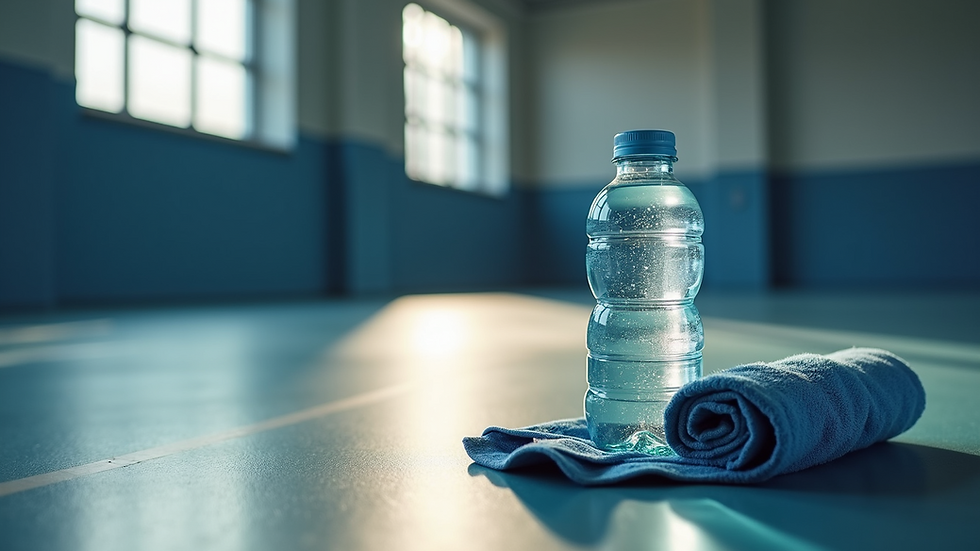Enhance Recovery with Sports Massage
- Kamil Mazur
- Sep 15, 2025
- 3 min read
Recovering effectively after physical activity or injury is crucial for maintaining peak performance and overall well-being. One of the most effective ways to speed up recovery and reduce discomfort is through targeted massage therapy. This article explores how incorporating specific massage techniques can enhance recovery, improve muscle function, and prevent future injuries.
Understanding the Sports Massage Benefits
Sports massage is a specialized form of massage therapy designed to support athletes and active individuals. It focuses on areas of the body that are stressed or injured during physical activity. The benefits of this type of massage extend beyond simple relaxation and include:
Improved circulation: Massage helps increase blood flow to muscles, delivering oxygen and nutrients essential for repair.
Reduced muscle tension: Targeted pressure alleviates tightness and knots, which can limit mobility and cause pain.
Enhanced flexibility: Regular sessions can improve the range of motion, reducing the risk of strains.
Faster injury recovery: By promoting tissue repair and reducing inflammation, massage accelerates healing.
Stress relief: Physical recovery is supported by mental relaxation, which massage also provides.
These benefits make sports massage an essential part of any recovery routine, especially for those who engage in regular or intense physical activity.

Key Techniques Used in Sports Massage
Several techniques are commonly used in sports massage to address different recovery needs. Understanding these can help you choose the right approach for your situation:
Effleurage - Long, gliding strokes that warm up the muscles and prepare them for deeper work.
Petrissage - Kneading and squeezing motions that improve circulation and break down muscle adhesions.
Friction - Deep, focused pressure applied to specific areas to release tight knots and scar tissue.
Tapotement - Rhythmic tapping or pounding to stimulate muscles and nerves.
Compression - Applying pressure to muscles to reduce swelling and improve blood flow.
Each technique serves a unique purpose and can be combined depending on the injury or recovery goal. For example, friction is particularly effective for chronic injuries, while effleurage is ideal for warming up muscles before exercise.

How Long to Recover After a Sports Massage?
Recovery time after a sports massage varies depending on the intensity of the session and the individual's condition. Generally, mild soreness or fatigue may be experienced for 24 to 48 hours post-massage. This is a normal response as the body adjusts and begins the healing process.
To optimize recovery:
Hydrate well: Drinking plenty of water helps flush out toxins released during massage.
Rest adequately: Allow muscles time to repair by avoiding strenuous activity immediately after.
Apply heat or cold: Use ice packs to reduce inflammation or heat packs to relax muscles as needed.
Follow up with gentle stretching: This maintains flexibility and prevents stiffness.
If soreness persists beyond a few days or worsens, it is advisable to consult a healthcare professional.

Integrating Sports Massage into Your Recovery Routine
To maximize the benefits of sports massage, it should be part of a comprehensive recovery plan. Here are some practical tips for integrating it effectively:
Schedule regular sessions: Consistency helps maintain muscle health and prevent injuries.
Communicate with your therapist: Share your activity level, pain points, and goals to tailor the massage.
Combine with other recovery methods: Use foam rolling, stretching, and proper nutrition alongside massage.
Listen to your body: Adjust the frequency and intensity of massages based on how you feel.
For those recovering from injury or intense training, professional guidance is essential. You can learn more about specialized treatments and how they support recovery at sports massage.
Maximizing Recovery Beyond Massage
While massage plays a vital role, full recovery involves multiple factors. Consider these additional strategies:
Balanced diet: Nutrients like protein, vitamins, and minerals support tissue repair.
Adequate sleep: Quality rest is crucial for muscle regeneration and overall health.
Active recovery: Light activities such as walking or swimming promote circulation without overloading muscles.
Mindfulness and stress management: Reducing mental stress can improve physical healing.
By combining these approaches with regular massage therapy, you create a holistic recovery environment that supports long-term performance and well-being.
Incorporating targeted massage therapy into your recovery plan can significantly enhance healing and reduce discomfort. Whether you are an athlete or someone who enjoys an active lifestyle, understanding and utilizing the benefits of sports massage will help you stay strong, flexible, and ready for your next challenge.





Comments